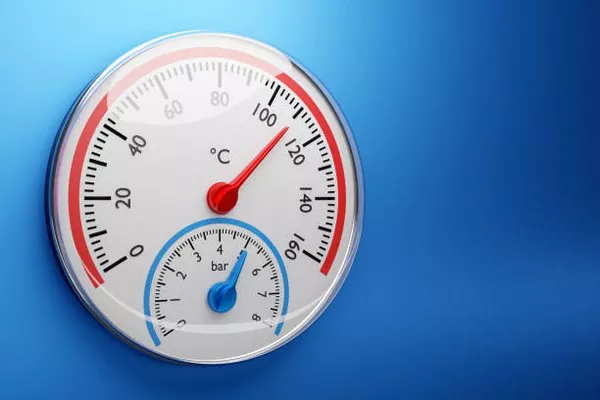Barometers, essential instruments for measuring atmospheric pressure, play a crucial role in meteorology, aviation, and even daily weather forecasting. Among the various liquids that can be used in barometers, mercury has emerged as the preferred choice over water, despite water being more abundant and less toxic. This preference is rooted in the unique physical and chemical properties of mercury that make it particularly suited for accurate and practical atmospheric pressure measurements. This article delves into the reasons why mercury is favored over water in barometers, examining factors such as density, vapor pressure, temperature effects, and practical considerations.
1. Density and Column Height
One of the most significant reasons mercury is used in barometers instead of water is its density. Mercury is approximately 13.6 times denser than water. This high density means that a mercury column will be significantly shorter than a water column for the same atmospheric pressure. In practical terms, this results in a more compact and manageable instrument.
At sea level, standard atmospheric pressure can support a mercury column about 760 millimeters (mm) high. In contrast, a water barometer would require a column over 10 meters (33 feet) high to measure the same pressure. The impracticality of housing and reading such a tall column of water makes mercury a more convenient choice.
2. Vapor Pressure
Vapor pressure is the pressure exerted by a vapor in thermodynamic equilibrium with its liquid at a given temperature. A liquid with high vapor pressure will evaporate more readily, which can interfere with the accuracy of the barometer. Water, with its relatively high vapor pressure, would introduce significant errors in pressure readings due to the evaporation of water into the barometer’s vacuum.
Mercury, on the other hand, has an exceptionally low vapor pressure. At typical room temperatures, mercury’s vapor pressure is negligible, meaning it does not evaporate to any significant extent. This stability ensures that the readings from a mercury barometer are accurate and not influenced by the evaporation of the liquid.
3. Temperature Stability
Temperature can affect the volume and pressure of liquids, potentially altering the accuracy of barometric measurements. Water expands and contracts more significantly with temperature changes compared to mercury. This thermal expansion would result in more substantial variations in a water barometer’s readings.
Mercury’s coefficient of thermal expansion is much lower than that of water. Therefore, its volume changes minimally with temperature fluctuations, leading to more stable and reliable readings over a range of temperatures. This characteristic is particularly important in meteorological applications, where precise measurements are essential.
4. Non-Adherence to Glass
Mercury does not wet glass, meaning it does not stick to the sides of the barometer tube. This non-adherence is due to mercury’s high surface tension and cohesive forces being stronger than its adhesive forces with glass. As a result, the mercury column forms a clean, convex meniscus that is easy to read accurately.
In contrast, water adheres to glass, forming a concave meniscus. This adhesion can cause inaccuracies in reading the exact level of the water column, particularly in narrow tubes. The meniscus curvature in a water barometer can lead to parallax errors, where the perceived level of the liquid varies depending on the observer’s angle of view.
5. Purity and Contamination Resistance
Mercury is less susceptible to contamination compared to water. In a water barometer, impurities or dissolved gases can alter the liquid’s density and surface tension, impacting the accuracy of the measurements. Additionally, biological growth such as algae can develop in water, further complicating maintenance and accuracy.
Mercury, being a metallic element, does not support biological growth and is less reactive with impurities. It remains pure over extended periods, ensuring consistent and reliable measurements. This resistance to contamination makes mercury barometers more durable and easier to maintain.
6. Historical and Practical Considerations
Historically, mercury barometers have been used since their invention by Evangelista Torricelli in 1643. Their reliability and accuracy have stood the test of time, making them the standard for atmospheric pressure measurement. This long history has built a wealth of data and experience around mercury barometers, reinforcing their continued use.
From a practical standpoint, the construction and operation of mercury barometers are well-understood and documented. The familiarity and proven track record of mercury barometers make them a trusted tool in both scientific and practical applications.
7. Safety and Environmental Concerns
While mercury’s advantages are clear, it is important to address the safety and environmental concerns associated with its use. Mercury is a toxic heavy metal that poses significant health risks if inhaled or ingested. Proper handling, storage, and disposal are crucial to prevent mercury exposure and environmental contamination.
In modern applications, alternatives such as aneroid barometers, which do not use liquids, are becoming more common. These devices use a small, flexible metal box called an aneroid cell that expands and contracts with changes in atmospheric pressure. Aneroid barometers offer the advantage of being non-toxic and portable, although they require calibration and are less traditional than mercury barometers.
See Also THE USE OF BAROMETERS
Conclusion
The preference for mercury over water in barometers is rooted in its superior physical and chemical properties, which enhance the accuracy, reliability, and practicality of atmospheric pressure measurements. Mercury’s high density allows for a more compact instrument, while its low vapor pressure, thermal stability, non-adherence to glass, and resistance to contamination ensure precise and consistent readings. Despite its toxicity, the historical precedence and proven reliability of mercury barometers have maintained their use in scientific and meteorological applications.
However, as safety and environmental concerns grow, the shift towards safer alternatives like aneroid barometers is likely to continue. While these modern instruments offer many advantages, the legacy of the mercury barometer as a cornerstone of atmospheric measurement remains significant. Understanding the reasons behind its historical preference provides valuable insight into the principles of accurate barometric measurement and the evolution of meteorological instruments.


